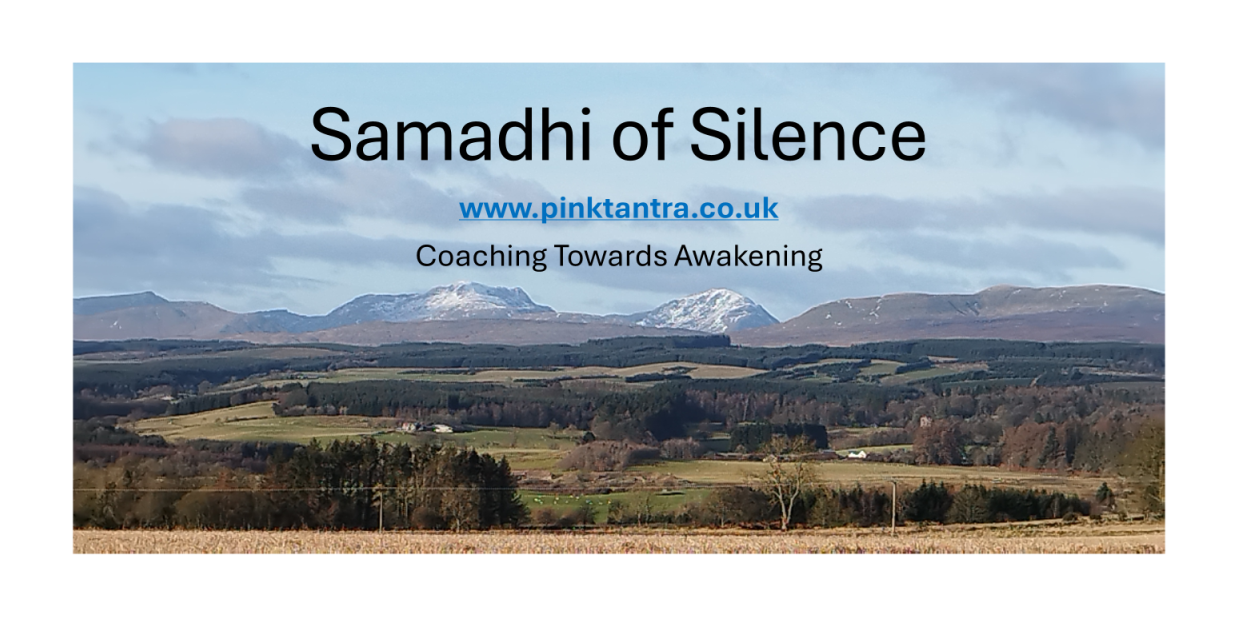Bliss and the samadhi of silence
Prf. S.K. Ramachandra Rao, in his book Tantra, Mantra, Yantra: The Tantra Psychology, offers a great overview of tantra as a cultural ideal of quiet contemplation, quite unlike what we have come to think of tantra as in the West. The samadhi of silence awaits.
 I came across a great little gem of a book, Tantra, Mantra, Yantra: The Tantra Psychology, by Prf. S. K. Ramachandra Rao. It is interesting that Prf. Rao notes that tantrik culture was bound to the ideal of quiet contemplation, more attuned to Mouna-Samadhi, the samadhi of silence, than the joyful life implied by Bliss which I wrote about in my previous Blog, How does the Self impact our day-to-day actions?
I came across a great little gem of a book, Tantra, Mantra, Yantra: The Tantra Psychology, by Prf. S. K. Ramachandra Rao. It is interesting that Prf. Rao notes that tantrik culture was bound to the ideal of quiet contemplation, more attuned to Mouna-Samadhi, the samadhi of silence, than the joyful life implied by Bliss which I wrote about in my previous Blog, How does the Self impact our day-to-day actions?
Indeed, it is interesting to note that tantra, similar to Advaita Vedanta, is a union of two aspects: awareness and energy. Awareness is generally symbolised by the colour white (of semen and Shiva) and energy by the colour red (action and Shakti) resulting in Ananda (Bliss). This union is, partly, where Pink Tantra derives from.
Prf. Rao points out that the earliest references to tantra as a system of thought was about 4 or 5 centuries before Christ, and by 300BC, Kautilya, an ancient Indian teacher, writer and polymath, uses the word comfortably as reference to “fundamental canons”. But tantra is a collective expression, comprising many different systems, with some of the key things in common being the indispensability of the Guru, initiation rites, secretness of their rituals, and the use of symbolism, including symbolic speech (it should be remembered that originally tantra was an oral tradition) which was full of mysterious, enigmatic and hidden sayings.
In this vein, for Prf. Rao, tantra is the process of relating unusual patterns (yantras) with uncommon formulae (mantras). Basic to both these patterns and formulae is the belief that the human body is the ground where they operate, ie, “the common field wherein these forces and vibrations operate”.
Historically, tantra was primarily a practical discipline, concerned with the individual, where two aspects took prominence: breathing and sex. The exhalation of air and ejaculation “were tantamount to expenditure of life energy and hastening of death. In order to prolong life, it was considered necessary to restrain breath and arrest the seminal discharge.” Key techniques advocated were pranayama, breath control, and (for men) vajroli-mudra to prevent the bindo reaching fire (ejaculation). Vajroli mudra is the practice of retaining semen, or if released, its recovery.
It is understandable then why tantra would look to harness sex and the sexual drive to reach spiritual objectives, sadhana, through harmonising and channelling psychic energy, as a form of “internal spiritual alchemy”, predominantly using the chakra system to rouse kundalini. This takes extra-ordinary effort, and stands at odds with popular attitudes and approaches, and alongside tantra’s secretive aspect, is clearly not intended for “the multitude”.
It is obvious therefore that sex in tantra was not for gratification, but for paravritti and restraint, where paravritti is the ‘turning about’ or transformation of our senses. Indeed, the Kaula lineage, which includes rituals of the five M’s (including sexual rituals) insists the path is not for those who lack control over their impulses and senses, again more attuned to the samadhi of silence.
Bringing it all together
Unlike our usual view of tantra in the West, as a form of wanton and orgiastic sex, tantra was rather about restraint and reaching that place of silence and stillness denoted by Mouna-Samadhi. This takes great effort and is therefore unlikely to attract many true adherents. But for those who do persevere, the transformation to Bliss (Shiva/Shakti, awareness/energy union, and the samadhi of silence) awaits.
Connect on Twitter / Facebook / JustFor.Fans
Email me direct if you are interested in mindful, embodied, trauma-informed, or spiritually-informed coaching, or if you would like to join my new Pink Tantra Towards Awakening group for chat rooms, video channels and in-person workshops around tantra and intimacy practices robert.pinktantra@gmail.com
See my personal development / personality profiling book DISCover the Power of You published through John Hunt Publishing Ltd, 2017. ISBN: 978-1-78535-591-2
And for a bit of light reading, see my first historical fictional novel Fermented Spirits published through Austin Macauley Publishers, 2022. ISBN-13: 978-1398437159